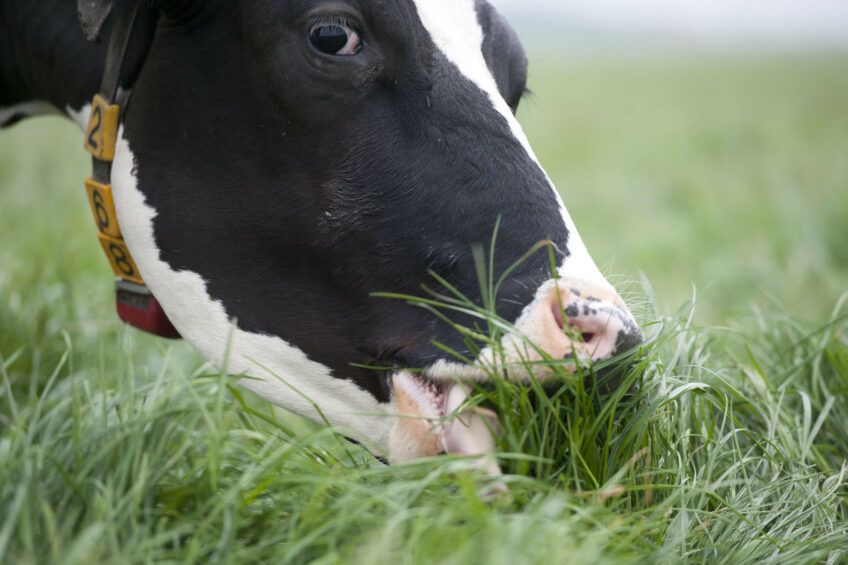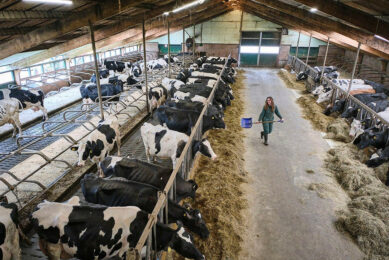Rumen efficiency: 9 animal indicators

Ruminant experts at Lallemand Animal Nutrition have defined a set of indicators to help evaluate the efficiency of the rumen on-farm. This tool is known as the Rumen Efficiency Investigation (REI). Here we take a closer look at 4 of them and explain how supplemental live yeast can benefit the rumen.
The goal of the REI is to help producers and nutritionists assess feed efficiency in real life working farm conditions. The REI is a holistic approach based on the assessment of a set of measurable indicators at the farm level. There are 9 indicators in total, selected by integrating bibliography reviews, practical dairy farms surveys and international expert views, and validated in the field. See the 9 indicators in the picture below.

This integrated method is an interesting decision-making tool as it enables the farm team and nutritionist to get a snapshot of a dairy herd status at different time points and to evaluate the impact of nutrition or herd management changes. Today, this tool has been widely used (over 25 countries) in different production systems and farms, and the data collected gives us an overview of the global rumen efficiency situation. The data show for example that 69% of the farms are at risk for ruminating activity and 72% for locomotion.
Focus on 4 indicators
Let’s focus on 4 of the REI indicators and see how the results of the global rumen efficiency survey align with the literature:
 Rumination activity is linked to rumen function and health. It has been shown that a lack of ruminating activity may be due to reduced rumen motility during acidosis (Allen 1997; Grant et al.,1990). Research shows that optimal rumination is between 400-500 min/day. Under 400 min/day, it could be a sign of poor rumen health and probably SARA.The REI audit consists of assessing the number of cows which are ruminating while lying down at a single time. According to the literature, a good target is to have 50-60% of the cows lying in their stalls ruminating. Rumination appears suboptimal in 69% of the farms audited.
Rumination activity is linked to rumen function and health. It has been shown that a lack of ruminating activity may be due to reduced rumen motility during acidosis (Allen 1997; Grant et al.,1990). Research shows that optimal rumination is between 400-500 min/day. Under 400 min/day, it could be a sign of poor rumen health and probably SARA.The REI audit consists of assessing the number of cows which are ruminating while lying down at a single time. According to the literature, a good target is to have 50-60% of the cows lying in their stalls ruminating. Rumination appears suboptimal in 69% of the farms audited.
 The link between locomotion and rumen health is well established. Lame animals can have high levels of histamine production and bacteria endotoxin release in the rumen, which is often linked to SARA (Nocek, 1997). Locomotion score is assessed visually on a scale from 1 to 5. Research indicates that lameness reduces total feeding time, and consequently, milk production is reduced. Lameness is very costly to farmers, both in treatment costs and lost production, in fact it has been measured to have 270 and 574 kg of lost milk production over an entire lactation (Huxley, 2013). It appears that in 72% of the farms audited, locomotion represents a challenge.
The link between locomotion and rumen health is well established. Lame animals can have high levels of histamine production and bacteria endotoxin release in the rumen, which is often linked to SARA (Nocek, 1997). Locomotion score is assessed visually on a scale from 1 to 5. Research indicates that lameness reduces total feeding time, and consequently, milk production is reduced. Lameness is very costly to farmers, both in treatment costs and lost production, in fact it has been measured to have 270 and 574 kg of lost milk production over an entire lactation (Huxley, 2013). It appears that in 72% of the farms audited, locomotion represents a challenge.
 Manure consistency assessment (on a 1-5 scale) reflects digestive function. Liquid manure indicates poor rumen efficiency, due to an increased passage rate, possibly from an imbalanced diet and increased fermentation in the lower gut. Manure screening is also recommended to measure the presence of undigested particles or grains and assess fibre size. The presence of undigested processed grains in the faeces is also linked to poor rumen efficiency. It also results from increased passage rate due to an imbalanced or low diet digestibility. Manure consistency is sub-optimal in 46% of the farms audited.
Manure consistency assessment (on a 1-5 scale) reflects digestive function. Liquid manure indicates poor rumen efficiency, due to an increased passage rate, possibly from an imbalanced diet and increased fermentation in the lower gut. Manure screening is also recommended to measure the presence of undigested particles or grains and assess fibre size. The presence of undigested processed grains in the faeces is also linked to poor rumen efficiency. It also results from increased passage rate due to an imbalanced or low diet digestibility. Manure consistency is sub-optimal in 46% of the farms audited.
 Finally, milk component yield is a consequence of rumen efficiency. In particular, milk fat is directly linked to rumen pH and overall function. In many countries, milk price is driven by milk fat level. In half of the farms audited, milk fat was below 3.8%.
Finally, milk component yield is a consequence of rumen efficiency. In particular, milk fat is directly linked to rumen pH and overall function. In many countries, milk price is driven by milk fat level. In half of the farms audited, milk fat was below 3.8%.
The data obtained through the survey are consistent with the published literature, and indicate that about half of the farms audited have suboptimal key rumen efficiency indicators, which is reflected on the dairy performance. Depending on the country, research studies have reported SARA prevalence around 20-30% and others greater than 50%.
Benefits of live yeast as a rumen modifier
REI audits can help farmers and their nutritionists better understand the link between animal indicators and performance, revealing that rumen efficiency can be an issue on many farms. To improve rumen efficiency, rumen-specific live yeast can be used. A meta-analysis of Levucell SC data (14 trials, 1,600 dairy cows) showed interesting results. Levucell SC is a rumen-specific live yeast (strain Saccharomyces cerevisiae CNCM I-1077). In standard conditions (non-stressful), this yeast has shown a consistent and significant improvement of feed efficiency (+3% in FCM/DMI) (De Ondarza, 2010). This improvement can go up to +6 – 9% FCM/DMI under stressful conditions. A few on-farm demonstration trials were conducted with the help of REI, showing improvement of key indicators:
- Locomotion: a farm trial was conducted in the north of Denmark, on a 52 primiparous dairy cows, fed a non-acidotic diet. The cows were split into two groups, control and Levucell SC, which received S. cerevisiae CNCM I-1077 live yeast top-dressed to the control diet. Locomotion score was improved with supplementation of the live yeast: the percentage of cows with good locomotion score increased from 58% to 84%.
- Rumination activity: An audit was conducted on a Japanese dairy farm at different time-points during the summer (high THI). Between the beginning of the live yeast supplementation and 3 months later, despite a growing heat stress issue, the percentage of ruminating cows increased from 49 to 58%.
- Manure consistency: the Danish trial also shows an improvement in the level of undigested fibres in the manure when fed live yeast. In control cows, particles above 5mm represent 5.5% of the manure weight, vs. only 1.5% when fed S. cerevisiae CNCM I-1077.
- Milk fat: A recent research trial (Ali Haimoud-Lekhal et al. 2016) indicated an increase in milk fat (from 4.00 to 4.05%), resulting in a significant increase of energy-corrected milk by +6.2% (from 29.1Kg/day to 30.9, p<0.001).
Conclusion
Rumen efficiency is key for ruminant performance and well-being and can be appraised thanks to practical indicators. The global survey indicate that around 50% of farms are exposed to rumen efficiency issues, which is in line with previous industry and university studies. Of course, one cannot ignore regional, environmental, or dietary differences. As we continue to gain more data, it is our hope to draw specific analysis according to the region, environmental conditions (e.g. heat stress), production system or stage of the animal life. Rumen efficiency appears to be often suboptimal and dairy producers and their nutritionists should continue their efforts to control SARA and enhance diet digestibility for optimal cow comfort and performance. Among the nutritional tools available to support rumen efficiency, rumen-specific live yeast is scientifically documented and its benefits for dairy producers yielding a high return on investment.
Join 13,000+ subscribers
Subscribe to our newsletter to stay updated about all the need-to-know content in the dairy sector, two times a week.










